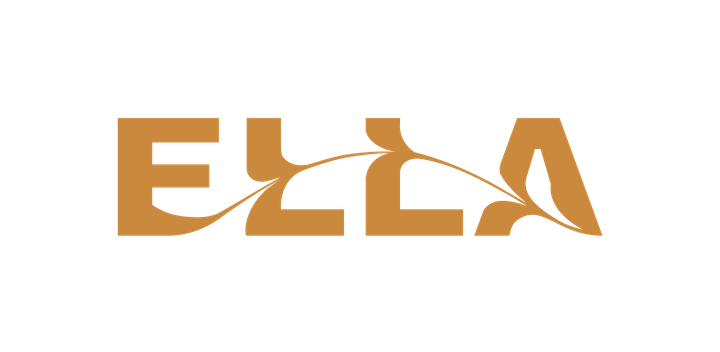New research: Language learning should be embodied and creative
New research suggests that language learning should be based on embodied and artistic activities. Learning a language in a creative and functional way inspires and motivates people of all ages. The pedagogical approaches studied in the four-year ELLA research project bring new perspectives to issues such as early language learning, integration, and Finnish language learning for international students.

What if languages were learned through singing, dancing, theatre, and circus? Learning a language through the arts is valuable, as a recent study by the ELLA project shows that embodied and creative activities can, for example, support vocabulary acquisition.
"Children grasp concepts and remember words better when they also interpret them through embodied activity," says Eeva Anttila, leader of the ELLA project. Anttila works as professor of dance pedagogy in Theatre Academy, University of the Arts Helsinki.
Embodied and artistic activities support learners in their use of language and encourage them to be creative in their interactions.
"At the same time, they enjoy the freedom to move in preschool or during class, and this joy also extends to their language learning."
Active and creative language learning would also bring much-needed extra movement into the school day. Only about half of primary school pupils take the recommended levels of physical activity.
Unique, multidisciplinary composition
The ELLA research project (2021-2024), funded mainly by the Kone Foundation and led by Uniarts Helsinki, will expand our understanding of language, language learning, learning in general, and the interconnectedness of art. The project aims to reform pedagogical practices in different learning environments and to stimulate critical debate on how educational structures can better respond to societal changes.
The premise for ELLA’s research has been the conception of language as active doing, as languaging. According to Professor Anttila, such a holistic view on language has gained ground in applied linguistics in recent years. The research team is also committed to a view of the embodied basis of learning.
The international research team is made up of language teachers, teacher trainers, artists, art teachers and researchers from various disciplines such as applied linguistics and art education.
"The composition of our research team has been unique in studying these phenomena," says Anttila.
A great toolkit for Finnish learners
The research project's broad understanding of language as embodied and creative activity could also transform the language learning approaches in the context of adult education.
The ELLA project studied multilingual and multicultural choirs and embodied language learning workshops as part of voluntary activities supporting integration.
Researchers worked in multi-professional teams in adult education contexts such as adult education centres, as part of public cultural services and in a multicultural centre.
"The results show that artistic activities also bring playfulness and joy to language learning for adults. It motivates and encourages language production, experimentation and creative use of language," says Anttila.
Music, singing, creative movement and dance bring many senses and many ways to language learning. They support interaction and practice speaking.
Language is part of all learning - including art learning
The results of the ELLA project highlight the potential of arts and embodied methods at all levels and in all areas of education.
"Language is a key element in all learning. Therefore, how language is understood, taught and used is of great importance", Eeva Anttila says.
According to the researchers, embodied and artistic activities should not be seen as a separate area in language learning or in the education system, since language and art, as key phenomena in human life, are interlinked in many ways.
Interview requests
Professor of Dance Pedagogy Eeva Anttila, Theatre Academy, University of the Arts Helsinki
- +358405858415
- eeva.anttila@uniarts.fi
Keywords
Contacts
Heta MuurinenResearch communication
Tel:050 569 2904heta.muurinen@uniarts.fiLinks
The University of the Arts Helsinki provides the highest level of education in music, fine arts, performing arts and writing in Finland. We were established in 2013, when the Academy of Fine Arts, Sibelius Academy and Theatre Academy were merged.
Alternative languages
Subscribe to releases from Taideyliopisto
Subscribe to all the latest releases from Taideyliopisto by registering your e-mail address below. You can unsubscribe at any time.
Latest releases from Taideyliopisto
The exhibition invites you to imagine the future together5.12.2025 12:39:58 EET | Press release
The research exhibition Idiorrhythmic Imaginaries opens at the Academy of Fine Arts’ Kuva/Tila gallery on 5 December.
Näyttely kutsuu kuvittelemaan yhdessä tulevaisuutta5.12.2025 12:26:08 EET | Tiedote
Idiorrhythmic Imaginaries -tutkimusnäyttely avautuu Taideyliopiston Kuvataideakatemian Kuva/Tila -galleriassa 5.12.
Saastamoisen säätiöltä 1,3 miljoonaa euroa Taideyliopiston Kuvataideakatemian kansainvälistymistä tukeviin hankkeisiin4.12.2025 17:06:08 EET | Tiedote
Osapuolet jatkavat pitkäaikaista kumppanuusohjelmaansa ”Kuvataiteen kansainväliset verkostot”. Rahoitus mahdollistaa muun muassa huipputason residenssit Euroopassa ja Yhdysvalloissa, ja vahvistaa akatemiassa jo tehtävää taiteilijapedagogiikan ja uusien materiaalien tutkimusta.
Tutkimus: Taidealojen väitöstutkijat voivat keskimäärin hyvin – silti joka neljäs uupuu12.11.2025 15:07:00 EET | Tiedote
Sibelius-Akatemian julkaiseman kyselytutkimuksen mukaan taidealojen väitöskirjan tekijät kokevat vähemmän stressiä ja työuupumusta kuin tiedealojen kollegansa. He myös sitoutuvat opintoihinsa muita vahvemmin. Silti joka neljäs kyselyyn vastannut koki psyykkistä kuormitusta.
Esitys kuurojen historiasta tuo näyttämölle vuosisatoja jatkuneen väkivallan4.11.2025 11:34:51 EET | Tiedote
Perinnöllinen kuurous on leimattu sairaudeksi, virheeksi ja uhaksi, joka pitää hävittää. Siihen pyrkivät myös uusimmat geenihoidot. Mutta haluavatko kuurot sitä itse, kysyy uusi The Disobedient Gene -esitys, jonka koko työryhmä koostuu viittomakielisistä taiteilijoista.
In our pressroom you can read all our latest releases, find our press contacts, images, documents and other relevant information about us.
Visit our pressroom